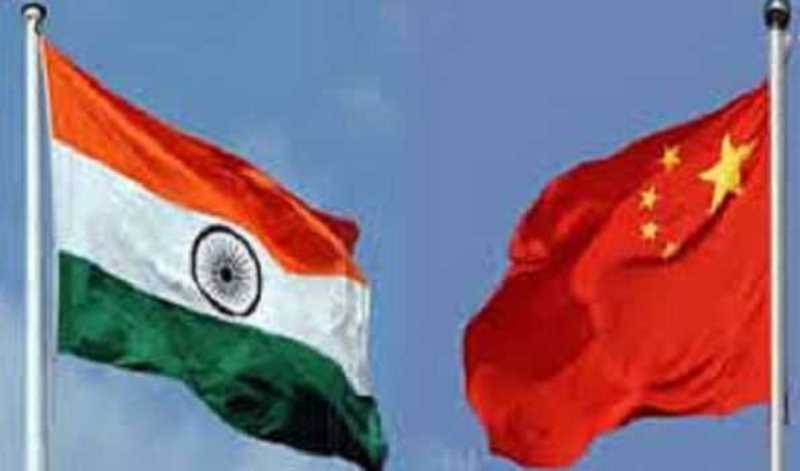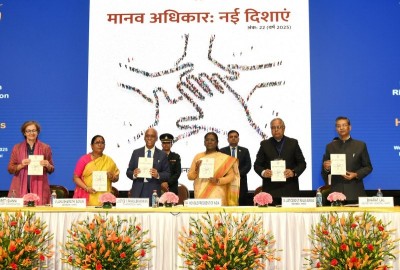 Energy Transition
Energy Transition
Energy Transitions and Geopolitics in South Asia: The Contest for Hydro-Hegemony on the Brahmaputra
The centrality of oil and gas in shaping the international relations of the 21st century have long created an academic and public policy focus on the relationship between energy and geopolitics.
This focus has now extended to renewable energy resources and the energy transition, including the use of rare earth minerals for the production and maintenance of renewables (Chapman, 2017).
It appears likely that, comparable to other sources of energy, the renewables sector will also emerge as a space in which geopolitical rivalries come to play out. Linked to every component of human and non-human life, the energy transition will ultimately increasingly shape foreign policy and geopolitics.
The interlinkages between the energy transition and the contest for political power are particularly visible in South Asia.
Faced with ambitious industrial programs designed to enable rapid socioeconomic development while accommodating a rapidly growing population, the region has registered a significant increase in general energy consumption (Chen, 2022), despite low per capita consumption rates.
Additionally, regional actors remain dependent on a small number of freshwater resources. The Brahmaputra River System (BRS), which is essential for China, India, and Bangladesh, is one of these shared key resources.
With the energy transition and the focus on renewables, including hydrological power, the riparian relationship of the three countries is put to a severe test as China has sought to exploit the hydroelectric potential of the BRS, creating detrimental effects on the river’s flow that have negatively affected access to water in downstream communities in both India and Bangladesh.
This article explores the riparian conflict surrounding the BRS with a specific focus on the effects of increased hydropower exploitation in upper riparian countries on downstream communities.
To this end, the article examines how the energy transition of the BRS’s upper riparian countries aggravates the underlying political tensions surrounding the river's resources.
The article is structured as follows. The first chapter will introduce the concept of hydro-hegemony (HH) as a means of conceptualizing how interstate relations can play out in the management of cross-boundary waterways. The article then analyzes the role of the BRS for the riparian countries and the wider region before examining how the BRS features in China’s and India’s respective energy transition strategies. This includes an analysis of how both China and India have sought to ‘capture’ the BRS’s resource potential. Lastly, this submission assesses how this (attempted) capture implicates mechanisms for riparian institution-building processes and what prospects may look like going forward.
Conceptualizing Hydro-Hegemony (HH)
The securitization of climate policy as a result of the climate catastrophe has made the politics of water and hydrological potential an increasingly important policy research field.
Dominant theoretical understandings of the politics of hydropower have been shaped by both neo-realist and neo-institutionalist understandings of international politics (Allouche, 2020) that have viewed the relations of riparian countries as shaped by relative competition or cooperation (Zeitouna & Warner, 2006).
The idea of HH ties into neo-realist assumptions and implies the notion that upper riparian countries can seek to exploit their geographically advantageous positions and operational capacities to maximize control over a river and its exploration potential.
The establishment of a hegemonic position over the management of a river system can be viewed as attractive for the hegemonic actor acting as it enables the actor to unilaterally prioritize national objectives over that of other agents. Additionally, unilateral control generates political leverage over downstream countries.
The idea of HH has three central variables.
The first key variable is the State’s interests and capabilities, shaping its willingness and capacity to explore its upper riparian position.
Relative domestic water scarcity, for instance, may motivate a government to maximize its exploitation of the river (Zeitouna & Warner, 2006).
Moreover, States must possess the operational-technological and financial capacity to act on this intent, for instance through the construction of dams that reduce the waterflows to downstream actors (Naff & Motson, 1984). Intent and capacity consequently play a key role in determining whether a State can seek to establish HH.
The second variable is the strategies the upper riparian employs in its effort to monopolize the exploitation of the river’s resources.
A State may, for instance, seek to develop institutionalized responses that reduce the potential for interstate tensions (Zeitouna & Warner, 2006).
Alternatively, the upper riparian may act unilaterally and without coordination with the downstream countries, ultimately manifesting and enabling a form of resource capture via the construction of infrastructure (barrages, dams, etc.) that maximize the gains for the upper riparian (Homer-Dixon, 2010, p. 177).
This one-sided alteration of the water-energy nexus with detrimental consequences for lower riparian countries is labelled "active unilateralism" (Waterbury, 1997, p. 279) as these alterations change the flow and water quality of the river.
The strategy or strategies employed by the upper riparian invariably shape reactions in downstream countries, thus manifesting a key variable in the outcomes of water-related issues.
The third variable is the framework of cooperation (or lack thereof) between all riparian countries and the role of the potential hegemon in this framework. Although States can engage in unilateral resource capture, many rivers are now subject to a variety of agreements that regulate shared usage of the river and ensure mutually beneficial outcomes.
Such agreements may be modelled on the customary international legal rules on the use of shared water resources, codified in the United Nations Convention on the Non-Navigational Uses of International Water Resources (Zeitouna & Warner, 2006). Such agreements can ensure a degree of stability in the management of the river.
Instability, in turn, may increase through unilateral actions by stronger riparian states that cause detrimental effects for downstream countries. This instability further increases if the battle for resources is contested among equally or similarly powerful riparian States.
Referring to these sublevels of analysis, the following assessment seeks to evaluate the impact of the energy transition on the interests of the riparian countries to establish if this influence will shape institutional cooperation and strategies by riparian actors.
The role of the BRS
The BRS, the world’s ninth largest river by water discharge and the 15th longest, is of crucial importance for South Asia.
Originating in Tibet, the BRS is also known as the ‘water tank of Asia’ due to its several tributaries, many of which run deep into central India.
The river itself flows through Tibet before reaching India and Bangladesh, from where it flows into the Bay of Bengal.
Crucial for all three countries due to its freshwater resources, the BRS carries an outsized importance for parts of India and Bangladesh (Babalova, 2020). Its role as an upper riparian provides China with significant leverage over both countries.
All three riparian States have partially converging and diverging needs linked with the BRS. For China, Tibet marks a scarcely populated region that holds significant water reserves, leading to China seeking to divert parts of the Tibetan water to its economic and demographic centers along the Chinese coast (Christopher, 2013).
India, in contrast, is much more dependent on freshwater supplies originating outside of its jurisdictions, with one-third of India's surface water originating from other countries' river systems (Christopher, 2013).
With 17% of the world's population but only 4% of global water resources, India depends heavily on the conduct of upper riparian partners, including China and Pakistan.
The dependence on the BRS is even more severe in Bangladesh, which has access to only 0.24% of global freshwater resources and almost entirely depends on its upper riparian neighbors for its freshwater supply (Christopher, 2013).
For Bangladesh, the BRS is key for its agricultural economy and fisheries, with up to 70% of the population living in the BRS basin (compared to 1% in China and 3% in India). Bangladeshi policymakers must thus consider that any changes in the river’s flows as having immediately detrimental effects on the country’s food and water security (Alam et al., 2016). This leaves China with the position to exert significant leverage over both India and Bangladesh.
The cross-boundary management of the BRS along the China-India border is further complicated by the persistence of territorial conflicts and militarization on both sides of the border.
The BRS crosses the McMahon Line that separates Tibet from the Indian state of Arunachal Pradesh, which China claims as part of Tibet and over which Beijing and New Delhi fought a war in 1962 (Rampini, 2021).
China has long refused to recognize the McMahon Line, negotiated between Tibetan and British representatives in 1914 (Panda, 2016).
The persistence of this dispute has led both China and India to militarize their territorial assets along the McMahon Line, maintaining its disputed character. These general tensions surrounding the eastern Himalayas invariably also inform the prospects of multilateral governance of the BRS.
Indeed, there is no existing multilateral framework overseeing the governance of the BRS as an inherently shared river system that is crucial for all riparian actors (Ho, 2016).
While Bangladesh has advocated for the establishment of multilateral mechanisms, China and India have traditionally favored bilateral solutions (Barua et al., 2018).
General power imbalances further allow both countries to unilaterally project power, including through the unilateral exploitation of river resources (Alam et al., 2009). China in particular favors this approach for structuring its riparian relations, as is also observable in Beijing’s relationship with downstream countries along the Mekong (Biba, 2021). Unsurprisingly, unilateralism has limited the prospects of multilateral governance.
Energy transition strategies and hydropower in China and India
How does the BRS feature in China’s and India’s energy transition strategies and how does this implicate the logics both States employ in their perspectives on the multilateral management of the river? China has significantly invested into its domestic hydropower infrastructure, treating it as a key renewable and capitalizing on its access to high-quality engineering (Babalova, 2020). Hydropower may also be a more attractive renewable than solar or wind energy as hydropower is not as weather-dependent and thus ensures greater grid reliability and stability.
This ability to serve peak and base loads and the possibility of storing excess renewable energy from other plants in so-called pumped-storage hydro plants makes hydropower an essential asset for the transition to renewable energy (Liu et al., 2018).
As a river with excellent potential for hydropower development, the Brahmaputra is naturally relevant for both countries' transition strategies. Due to its position as a lower riparian, the decisions made in Beijing and New Delhi imply key ramifications for Bangladesh.
 Image: UNI
Image: UNI
China
The energy transition presents a considerable challenge for China’s manufacturing-heavy growth model.
Firstly, China’s continued and pronounced dependence on fossil fuels creates significant costs in a shift towards renewables. Secondly, China has clear preferences for particular renewables and the strategy concerning renewable energy sources has become openly linked to other short to mid-term political, social, and economic objectives (Hepburn et al., 2021).
This implies an international dimension: as the world’s largest polluter in total terms, Beijing faces significant international pressure to reduce its emissions (Hepburn et al., 2021).
At the same time, China’s growing economic influence and investment in renewables, both domestically and internationally, also creates a platform at which China can take an increasingly leading function (Chen, 2016; Layne, 2018). China recently announced that it will aim for carbon neutrality by 2060 and seeks to be at the forefront of energy innovation (Hepburn et al. 2021). This is reflected in the increased "greening" of the Belt-and-Road Initiative (BRI), which now promises advances in renewable energy and sustainability alongside investments in physical and digital infrastructure (Layne 2018). In this sense, the energy transition is intrinsically linked to China’s broader regional and global ambitions as a norm-shaping actor.
Renewables have featured prominently in China’s discourse on domestic and international development. President Xi Jinping announced that China will seek to peak its emissions before 2030, a highly ambitious target that requires considerable investment in renewables (Hepburn et al., 2021).
As part of this, China has planned to stop investing in coal-fired power plants in China and abroad. This would mark a significant shift given that China relies on coal-fired power plants for over 60% of its energy mix (IEA, 2021).
To compensate for the decreasing consumption of coal, Beijing has significantly increased spending on renewables, with China now topping global investments in renewables (Hepburn et al., 2021). This has come to bear fruits: while the share of fossil fuels in the Chinese energy mix has begun to decline, the use of hydropower, solar, and nuclear power has risen (IEA, 2021).
Hydropower is framed as particularly important for achieving Beijing’s climate objectives. China possesses a vast hydropower potential, almost tripling that of any other country (IRENA, 2019).
Yet, domestic hydropower production has thus far struggled to satisfy the rapidly growing demand for energy in the industrial centers (Hennig & Magee, 2021). Growing demand has created a focus on previously less explored areas, including in Tibet, where the typography offers perfect conditions for hydropower development (Hennig & Magee, 2021).
Exploiting the potential of the BRS is consequently linked with broader domestic socioeconomic objectives and is not necessarily geared to only exert pressure on Bangladesh and India.
That said, the effects of damming projects in Tibet on the flow of the BRS remain identical. Regardless of the motivation, China thus conducts a form of unilateral resource capture.
India
India too will play a key role in the development of global responses to the climate catastrophe. Despite a low per capita emissions rate (around three times below the global average) (Hof & Dagnachew, 2020), India is the third largest emitter of greenhouse gases and the third-largest final energy consumer globally (Olivier et al., 2017).
As a result of the country's rapid industrialization and improving living standards, CO2 emissions rose by 70% between 2007 and 2017 (Hof & Dagnachew, 2020). As India develops economically and industrially, per capita consumption rates will inevitably increase further, posing significant challenges to policymakers focused on alleviating climate challenges (Yergin, 2020). At this point, India produces 75% of its electricity through coal-fired power plants (Hof & Dagnachew, 2020).
Like China, however, India has set ambitious emission reduction targets.
The country sets out to honor its international climate commitments by setting a target of 40% non-fossil fuel power generation by 2030 (Hof & Dagnachew, 2020). Between 2010 and 2018, India doubled its renewable energy capacity (Hof & Dagnachew, 2020). In its prioritization of domestic development objectives, India has also explored various renewable transition strategies.
Compared to China, wind and solar energy play a more significant role in the Indian energy transition and account for most of the increase in renewable capacity (Hennig & Magee, 2021).
While India has the fifth largest hydropower capacity, it has made less significant advancements in developing its hydropower capacity (IHA, 2019).
Recently, however, reports have highlighted the importance of hydropower in the improvement of grid stability amid an increase of renewables in the Indian power grid (IHA, 2020), leading to a growing focus on large-scale hydropower projects (Biba, 2021).
Crucially, next to its grid-stabilizing effects, large-scale hydropower also combines greater energy yield with higher profit margins.
India’s growing focus on hydropower on the BRS as a key renewable is buttressed by two underlying trends. Firstly, climate change and the resulting energy transition create an increasing demand for renewable energy and a higher focus on hydropower exploration.
Secondly, the growing liberalization of the electricity market leads to an increased importance of profit margins and less attention to local and regional concerns regarding large-scale projects that are outweighed by the transition goals of the central government. Ultimately, New Delhi has become more wary of the growing Chinese impact on the river while simultaneously deprioritizing Bangladeshi concerns.
Unilateral resource capture and changing strategic dynamics
The energy transition strategies in both China and India have heightened the respective emphasis on enhancing the hydrological exploitation of the BRS. The unilateral development and construction of hydrological infrastructure projects along different parts of the BRS creates key implications for downstream Bangladesh and, to a lesser degree, India.
The construction of such infrastructure has become a common practice in China and to a lesser degree India. While China has ramped up damming projects in Tibet (Rampini, 2021), India too has invested significantly in expanding its exploitation capacity.
For India, the BRS alone accounts for 40% of the national hydropower potential. Compared to China, India’s focus on developing large hydropower projects along the BRS is relatively novel.
The rising demand for renewable energy, grid stability considerations, and market liberalization have come to favor the development of invasive, large-scale projects along the river (Hennig & Magee, 2021).
The shared exploitation strategies of the river’s flow ultimately manifest a form of resource capture in which China is comparatively more aggressive because of its position as the upper riparian. This position, in combination with Beijing’s focus on hydropower development and its operational capacity to act on this intent establishes China in a quasi-hegemonic position.
China’s advantaged role and conduct on the BRS has inevitably stoked tensions with India.
Research on other transboundary river systems indicates that a shift in the exploitation practices of one riparian country has adverse effects on downstream actors (Hennig & Magee, 2021), potentially producing negative effects for the bilateral relationships and causing a decrease in the cooperation on shared resources (Rampini, 2021). China’s active unilateralism on the exploitation of the BRS illustrates this dynamic.
On top of damming the BRS in Tibet, China has also sought to construct a water corridor alongside the new, Tibet-based infrastructure projects (Babalova, 2020). Although Beijing has thus far refuted concerns that the project will cause harm to downstream countries, India and Bangladesh have repeatedly claimed that the corridorization would invariably impact the river’s flow negatively.
Indeed, the sort of hydropower infrastructure China seeks to construct in Tibet invariably detrimentally shapes downstream water supplies and will almost certainly prove detrimental to agricultural production in India and Bangladesh as important sediments would be prevented from reaching the fertile floodplains downstream. For a country as dependent on the domestic agricultural sector as Bangladesh, this exacerbates preexisting concerns regarding national food security.
For the relationship between China and India, the proximity of one of the dams to Arunachal Pradesh has further infused these discussions on the BRS with geostrategic considerations.
The intertwinement of hydropower infrastructure with broader military infrastructure has led to a heightened securitization of infrastructure development in the eastern Himalayas.
It is notable that the investments on the Chinese side are not necessarily geared towards enhancing China’s military posture vis-à-vis India. Improving the connectivity between western China and the coastal heartland has been a long-standing plan in Beijing, formulated as part of its strategy of “opening up the West” (Babalova, 2020).
This strategy is meant to encourage economic development in China’s western provinces and tighten Beijing’s grip in non-Han areas, including through the creation of labor opportunities via increased investment.
Energy and infrastructure policy here becomes aligned with domestic economic and security considerations. Yet, the deep threat perceptions of China in New Delhi result in even primarily domestic projects being seen in the context of geopolitical competition.
What are the prospects for the development of cooperative water management mechanisms on the BRS? With the increasing interest of China and India in the Brahmaputra and especially China’s focus on enhancing its unilateral exploitation capacities, alongside Beijing’s historical opposition to multilateral water management agreements, cooperation seems even less likely than before. Instead, the energy transition has only amplified China's initial preference for unilateral action.
The unilateral exploitation of the Brahmaputra for its water and energy resources increases China's behavior as a de facto hydro hegemon toward its riparian neighbors.
The prospects of bilateral cooperation with India in particular are shaped by the securitization of the BRS on both sides of the border, further limiting cooperative opportunities (Zeitouna & Warner, 2006). Overall, China, with its upper riparian position, does not seem willing to engage in multilateral water-sharing agreements, as is also reflected in its policy towards its fellow riparian countries on the Mekong (Biba, 2021).
Considering China's increasing interest in the Brahmaputra in the wake of its energy transition, Beijing's behavior increasingly mirrors its hydro hegemonic behavior in Southeast Asia.
Conclusion
The BRS is of vital importance for its riparian countries, yet the capacity to shape its flows is unevenly distributed. China enjoys de facto HH because of its riparian position, its political intent to exploit the river’s resources, and its operational capacity to do so. India can also act in a hegemonic way toward Bangladesh.
The capacity to do so, however, is more limited due to its position along the BRS. The lacking leverage of Dhaka and New Delhi towards Beijing results in a scenario in which cooperative mechanisms remain absent and China is capable of engaging in unilateral resource capture.
The focus on exploring and exploiting the BRS has increased as a result of energy transition strategies in China and India. Both countries need to generate significant amounts of renewable energy to meet international and domestic obligations and goals.
In this sense, Beijing and New Delhi follow a path that prioritizes meeting these goals over the coordination of riparian management, producing detrimental consequences for Bangladesh.
Beijing and New Delhi's unilateral understanding of the energy transition makes both China and India focus on large-scale hydropower plants that negatively affect water flows for their lower riparian neighbor.
Within this zero-sum exploitation of the Brahmaputra, both countries have started to use a resource capture strategy that, in the case of China, is also amplified by plans to diverge water from the BRS.
This securitization of the Brahmaputra's management makes cooperation increasingly less likely.
The establishment of institutions or water share agreements has become less likely due to the securitization of the BRS in China and India and the centrality of the river for respective transition strategies. As is the case with the Mekong, China has not shied away from establishing hegemonic relations with its neighbors.
Ultimately, the pursuit of ambitious transition strategies has amplified the unilateral exploitation of the Brahmaputra.
This understanding of the energy transition as a zero-sum game mirrors the current exploitation strategies employed for fossil fuels. In South Asia, energy transition strategies are likely to add to rather than alleviate regional tensions.
Support Our Journalism
We cannot do without you.. your contribution supports unbiased journalism
IBNS is not driven by any ism- not wokeism, not racism, not skewed secularism, not hyper right-wing or left liberal ideals, nor by any hardline religious beliefs or hyper nationalism. We want to serve you good old objective news, as they are. We do not judge or preach. We let people decide for themselves. We only try to present factual and well-sourced news.







